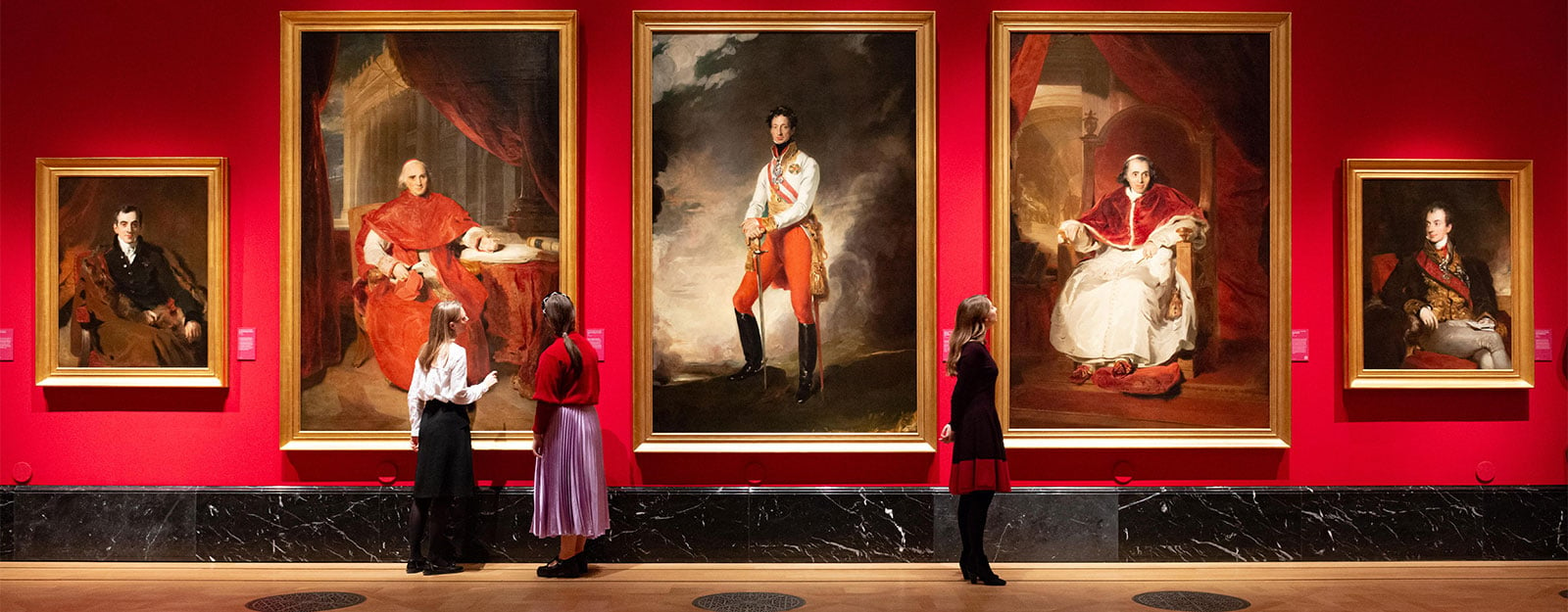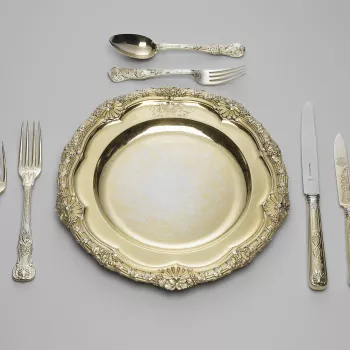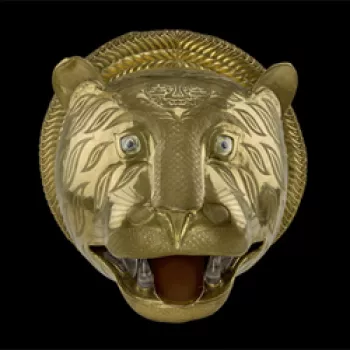
About the Collection
Learn more about the Royal Collection, one of the most important art collections in the world.
Silver and Gold
The silver and gold in the Royal Collection today was largely assembled following the restoration of the monarchy in 1660. The remnants of earlier collections had been melted down for coinage during the Civil War and Interregnum. Apart from the 12th-century anointing spoon, Charles II was obliged to order new regalia for his coronation. This regalia is still in use and is displayed at the Jewel House in the Tower of London.
The collection of plate comprises every form of silver, from the outstanding examples of furniture commissioned by Mary II and William III to the silver toys collected by Queen Mary, consort of George V. Most of the collection fulfils a very practical purpose and is used for dining. Frederick, Prince of Wales, acquired the spectacular Marine Service by Nicholas Sprimont and Paul Crespin, the epitome of rococo taste. To this George III added the Coronation Service by Thomas Heming, and George IV purchased the Grand Service, which contains works by Paul Storr and Benjamin Smith from designs by Flaxman and Stothard.
George IV also purchased a number of continental 16th- and 17th-century standing cups for display rather than use. Some are of silver gilt, while others are formed from exotic natural materials, including ostrich eggs, nautilus shells and ivory mounted in silver gilt. Prince Albert commissioned pieces of silver to his own design, including a centrepiece with models of Queen Victoria's favourite dogs.
Click on a highlight to learn more.
Highlights
Further reading
E.A.Jones, The Gold and Silver of Windsor Castle, London 1911









